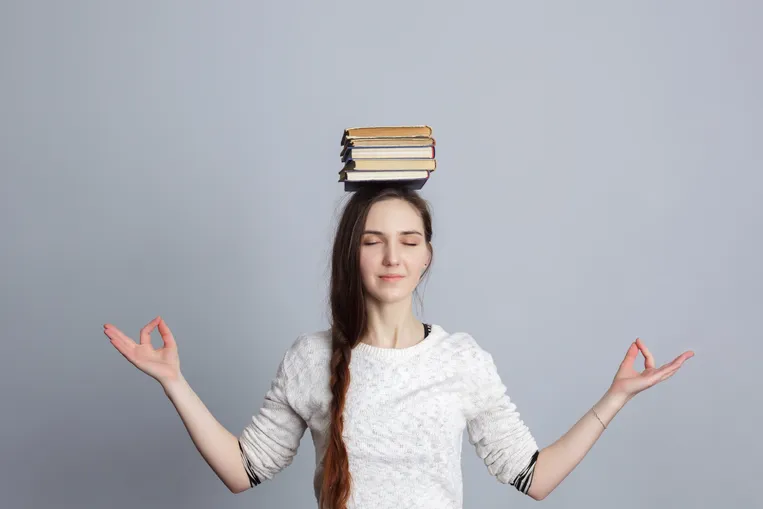
Have you ever been writing down a grocery list and the next moment you realize that minutes have passed, your page is blank, and you are thinking about your weekend plans? There's actually a name for it -- 'dysmetria of thought'.
It's when we begin a thought heading in one direction and it ends up in a completely different place. We were thinking about groceries, and now we are thinking about the beach. We have all experienced temporary lapses in attention like this, but for those who particularly struggle with attention or ADHD, the problem seeps into all aspects of life and can negatively affect learning and focus.
Dr. Jeremy Schmahmann, Professor of Neurology at Harvard Medical School, was one of the first to suggest that issues in attention could be linked to the cerebellum. This was initially a surprise to brain scientists who had long known the cerebellum to control balance and coordination in the body. Recent studies show that strengthening the functionality of the cerebellum leads to improvements in attention, memory, and emotional regulation.
Cerebellum Exercises and ADHD
The cerebellum, which is Latin for 'small brain', is a small structure at the base of the brain. In many ways it looks almost separate from the rest of the brain -- hence its Latin name. The cerebellum plays a very important role in motor function. It does not initiate movement but is involved with the coordination, timing, and precision of movement. Although only taking up 10% of the mass of the brain, it holds over 75% of the neurons of the brain.
In the past 20 years, the cerebellum has received much attention from neuroscientists who have begun to draw links between the cerebellum and higher functioning of the brain such as attention, learning, and emotional regulation. Schmahmann's work has shown that the cerebellum is connected to the prefrontal cortex (responsible for cognitive functions) by the vestibular circuit (responsible for balance and connected to the inner ear).
Simply put, regions in the brain responsible for balance and coordination are intricately connected to those areas responsible for executive functioning. Scientists were immediately intrigued -- by performing exercises to improve balance and thus stimulate the cerebellum, could executive and cognitive function be improved? The answer was yes! The cerebellum is responsible for the coordination of muscles as well as thoughts and emotions.
The Link Between Balance and ADHD
Before Dr. Schmahmann's pioneering study on the cerebellum, the links between balance and attention were merely anecdotal and had not been scientifically proven. In the 1960s a man called Frank Belgau invented the Belgau Balance Board which he claimed improved learning skills. Even before that, Dr. Harold Levinson prescribed motion sickness medication to his patients with dyslexia and ADHD. His patients reported excellent results but Levinson had always been considered somewhat 'out' of the mainstream of medicine.
Schmahmann's study, as well as others, was a breakthrough in its potential to assist those who struggle with attention, concentration, mood regulation, and other symptoms related to diagnoses such as ADHD. Schmahmann found that the prefrontal cortex, the area of the brain responsible for most of the symptoms and difficulties linked to ADHD, is connected to the cerebellum, whose functioning can be trained and strengthened. This has offered a new angle to the treatment of ADHD and other attention disorders.
A 2021 study tested the efficacy of balance training in the therapeutic treatment of ADHD. Over a six-month period, it compared the improvement in symptoms of two groups of children in China. The control group was treated with MPH (the most commonly used pharmacological treatment for ADHD) and the experiment group was treated with a combination of MPH and balance training. The results showed that the group who incorporated balance training saw a more significant improvement in symptoms than the group who relied purely on medication.
Other studies had similar results -- coordinative exercises improved concentration and attention.
How to Incorporate Balance Training:
Dr. Edward Hallowell, a psychiatrist, and leader in the field of ADHD research, recently published a book in collaboration with Dr. John Ratey, Associate Clinical Professor of Psychiatry at Harvard Medical School. The book, ADHD 2.0, explores the connection between balance and ADHD and suggests a set of exercises to incorporate into balance training. They are as follows:
Stand on one leg for one minute, or until falling over.
Stand on one leg with your eyes closed for one minute, or until falling over.
Take off socks and put on socks without sitting down.
Stand on a wobble or balance board for as long as possible. Then do it again with your eyes closed.
Sit on an exercise ball with feet off the floor for as long as possible. Then repeat with eyes closed.
Do a low plank hold (elbows on the ground, feet extended behind) for as long as possible.
Learn to juggle, then spend 3-5 minutes juggling.
These are a great set of exercises that can be done at home, or anywhere, for very little cost. Try them once a day for around ten minutes, or longer!
Other activities such as yoga, martial arts, skateboarding, skiing, and gymnastics are also great for balance training. We suggest starting as easy as possible and increasing the difficulty over time. Make sure to keep track of improvements to see how far you, or your child, have come. You may start off with just thirty seconds on one leg but could improve to several minutes in just a few weeks.
The benefits will soon pay off. Not only will motor control and coordination improve visibly, but so will reading, learning, attention, and emotional regulation. It is known that 40% of children with ADHD have problems with motor skills such as coordination and balance -- these will most certainly improve too.
Hallowell and Ratey also recommend the Zing Program established by Wynford Dore, an ADHD and Dyslexia expert, in England. Zing offers a cerebellar graduated series of over a hundred exercises that stimulate and challenge balance and coordination. The exercises can be done at home and the results are extremely positive, not just for those with ADHD but also for those on the autism spectrum.
The more these exercises are repeated, the more the connections in the brain will be strengthened and rewiring will take place -- thanks to neuroplasticity, the brain's ability to adapt and change in response to experience. 'What fires together, wires together' according to Donald Hebb, 'the father of neuropsychology'. This is most certainly the case with the connection between the cerebellum, the prefrontal cortex, and the vestibular system.
Final Thoughts
The science is clear, balance training leads to an improvement of cerebellar functioning and is effective in reducing the unwanted symptoms of ADHD. Easy and simple exercises, which can be done anywhere and anytime, can make a great difference in the lives of those who struggle with attention and hyperactivity. Just as Hallowell and Ratey suggest, the key to the therapeutic treatment of ADHD is to "minimize those variations (symptoms) that interfere with a good life, and maximize those that lead to a really good life." So get on one leg, close your eyes and see the results!
** Disclaimer: This is not intended to be a substitute for professional medical advice and should not be relied on as health or personal advice. Always seek the guidance of your doctor or other qualified health professional with any questions you may have regarding your health or a medical condition.
Recommended Resources
Edward Hallowell and John Ratey, ADHD 2.0: New Science and Essential Strategies for Thriving with Distraction--from Childhood through Adulthood
How many core habits and skills is your child missing?
Take our short quiz and find out.
Take our quiz

_2rxjp3.webp)
_S3ttf.webp)